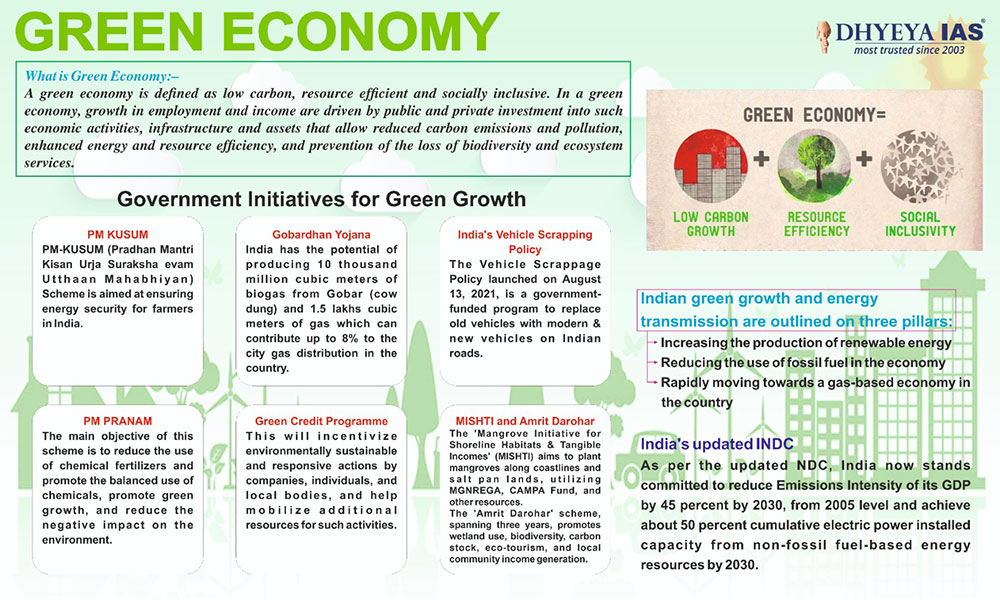
What is Green Economy –
A green economy is defined as low carbon, resource efficient and socially inclusive. In a green economy, growth in employment and income are driven by public and private investment into such economic activities, infrastructure and assets that allow reduced carbon emissions and pollution, enhanced energy and resource efficiency, and prevention of the loss of biodiversity and ecosystem services.
Indian green growth and energy transmission are outlined on three pillars:
- Increasing the production of renewable energy
- Reducing the use of fossil fuel in the economy
- Rapidly moving towards a gas-based economy in the country
India’s updated INDC
As per the updated NDC, India now stands committed to reduce Emissions Intensity of its GDP by 45 percent by 2030, from 2005 level and achieve about 50 percent cumulative electric power installed capacity from non-fossil fuel-based energy resources by 2030.
Government Initiatives for Green Growth
PM KUSUM
- PM-KUSUM (Pradhan Mantri Kisan Urja Suraksha evam Utthaan Mahabhiyan) Scheme is aimed at ensuring energy security for farmers in India.
Gobardhan Yojana
- India has the potential of producing 10 thousand million cubic meters of biogas from Gobar (cow dung) and 1.5 lakhs cubic meters of gas which can contribute up to 8% to the city gas distribution in the country.
India’s vehicle scrapping policy
- The Vehicle Scrappage Policy launched on August 13, 2021, is a government-funded program to replace old vehicles with modern & new vehicles on Indian roads.
PM PRANAM
- The main objective of this scheme is to reduce the use of chemical fertilizers and promote the balanced use of chemicals, promote green growth, and reduce the negative impact on the environment.
Green Credit programme
- This will incentivize environmentally sustainable and responsive actions by companies, individuals, and local bodies, and help mobilize additional resources for such activities.
MISHTI and Amrit Darohar
- The 'Mangrove Initiative for Shoreline Habitats & Tangible Incomes' (MISHTI) aims to plant mangroves along coastlines and salt pan lands, utilizing MGNREGA, CAMPA Fund, and other resources.
- The 'Amrit Darohar' scheme, spanning three years, promotes wetland use, biodiversity, carbon stock, eco-tourism, and local community income generation.
